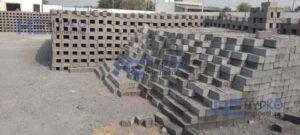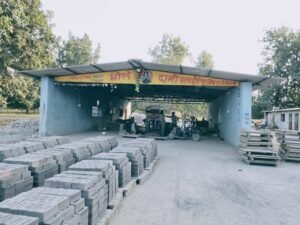Table of Contents
Introduction: The Rise of Fly Ash Bricks in Sustainable Construction
Fly ash bricks represent the forefront of green building solutions, blending environmental consciousness with remarkable structural robustness, notably the Compressive Strength of Fly Ash Bricks. Composed of fly ash, water, cement, and sand, they’re setting new benchmarks in the construction world. This piece dives deep into the importance and measurements associated with the Compressive Strength of Fly Ash Bricks, shedding light on their characteristics, significance in load-bearing, testing mechanisms, and how they’re sculpting tomorrow’s building landscape.

Compressive Strength of Fly Ash Bricks: A Blend of Waste and Strength
In the green revolution of construction, fly ash bricks turn perceived waste into invaluable assets. Their notable Compressive Strength of Fly Ash Bricks is what sets them apart. These bricks, harnessing fly ash from thermal power plant residues, cement, sand, and water, showcase a distinct composition that boosts their strength. The pozzolanic nature of fly ash means it partners with lime and water, spawning cement-like structures. This process bolsters the brick’s resilience and endurance.
Tapping into Strength of Fly Ash
The brilliance of fly ash bricks stems from the foundational strength of fly ash. The Compressive Strength of Fly Ash Bricks can be attributed to this foundation. Interacting with water and lime, fly ash undergoes a transformative chemical journey, culminating in cement-like compounds. These formations architect a firm matrix within bricks, amplifying their structural grit. This intricate particle web plays a pivotal role in driving the compressive strength of these bricks.
Measuring the Compressive Strength of Fly Ash Bricks
The linchpin of Compressive Strength of Fly Ash Bricks robustness is its measurable compressive strength—essentially, its capability to resist axial pressures. Typically, fly ash bricks proudly parade a compressive strength oscillating between 70 to 120 kg/cm². Such figures not only rival but often eclipse traditional clay brick benchmarks. The synergy of fly ash’s reactive properties, paired with meticulous production, results in this laudable strength.
Assessing the Compressive Strength of Fly Ash Bricks: A Look at Standardized Tests
Standardized testing paradigms ensure the consistent strength of fly ash bricks:
- Compressive Strength Test: The cornerstone of strength evaluation, this test gradually amplifies pressure on a brick until its breaking point. The apex load it bears before shattering equates to its compressive strength.
- Water Absorption Test: A brick’s capacity to absorb water often hints at its long-term durability. By gauging the weight hike post-immersion, one can infer its water retention aptitude.
- Efflorescence Examination: The potential salt migration to a brick’s facade can mar both its look and structural stamina. This evaluation quantifies efflorescence propensity, impacting brick longevity.
- Dimensional Consistency Check: Uniformity in form and dimension is paramount for brickwork integrity. This analysis discerns the dimensional consistency of bricks in a given lot.
Conclusion: The Power and Promise of Compressive Strength of Fly Ash Bricks
Fly ash bricks stand tall as beacons of modern construction, melding eco-friendliness with potent compressive strength, signified by the Compressive Strength of Fly Ash Bricks. They promise not only a robust building foundation but also a nod to environmental preservation.
For those keen on navigating the avenues of green construction, integrating a Fly ash brick Making Machine can be a game-changer, tapping into the power and promise of fly ash bricks.
Future Implications of Using Fly Ash Bricks
As urbanization progresses and the demand for sustainable solutions amplifies, fly ash bricks are positioned to be more than just an alternative to traditional bricks; they are gearing up to be a mainstream choice. With their environmentally friendly components, they offer a reduction in carbon footprints, making them a favorite among builders aiming for green certifications.
Moreover, the continuous research into enhancing the compressive strength of fly ash bricks means future constructions using these bricks will not only be eco-friendly but also potentially more durable and cost-effective. This dual benefit of environmental responsibility and structural excellence ensures that fly ash bricks are not just a fleeting trend but a mainstay in the evolving world of sustainable construction.



